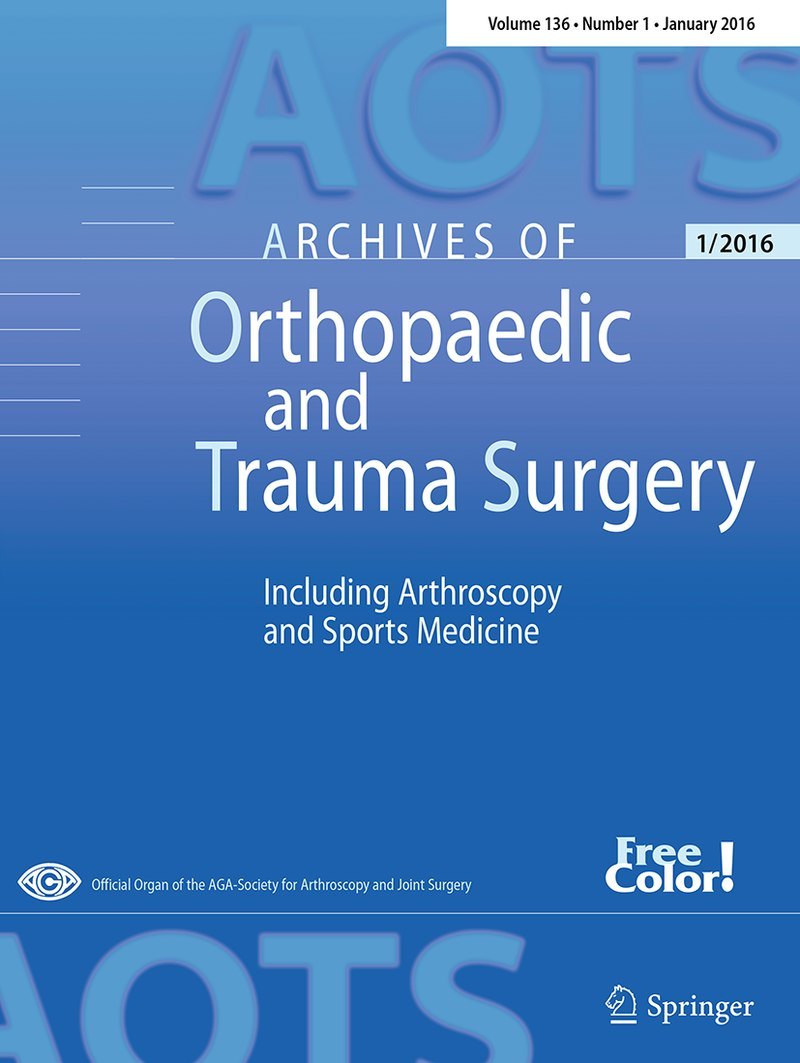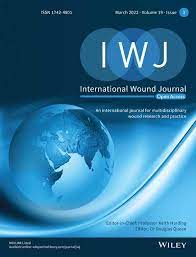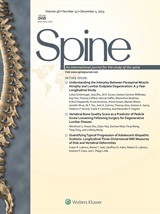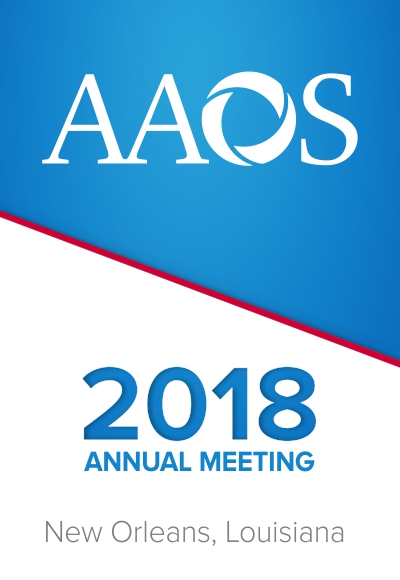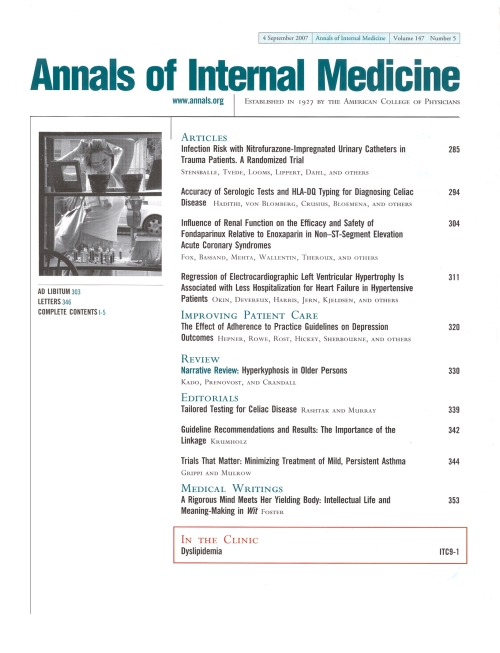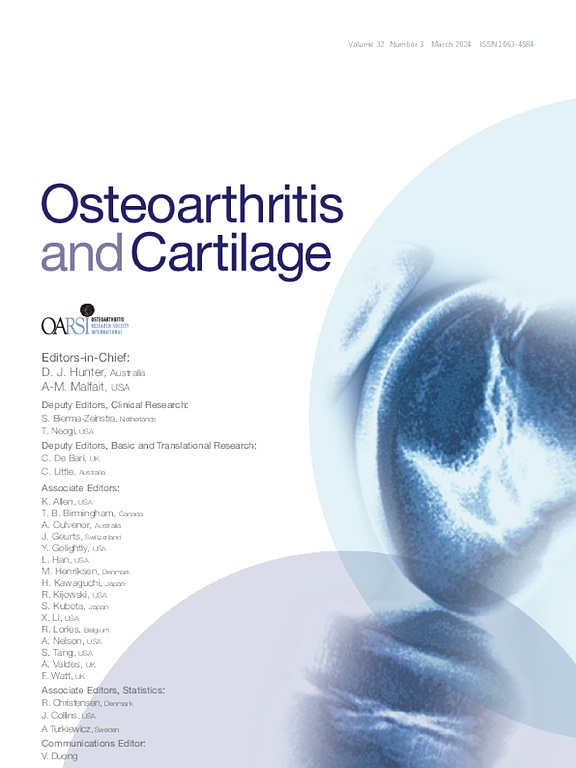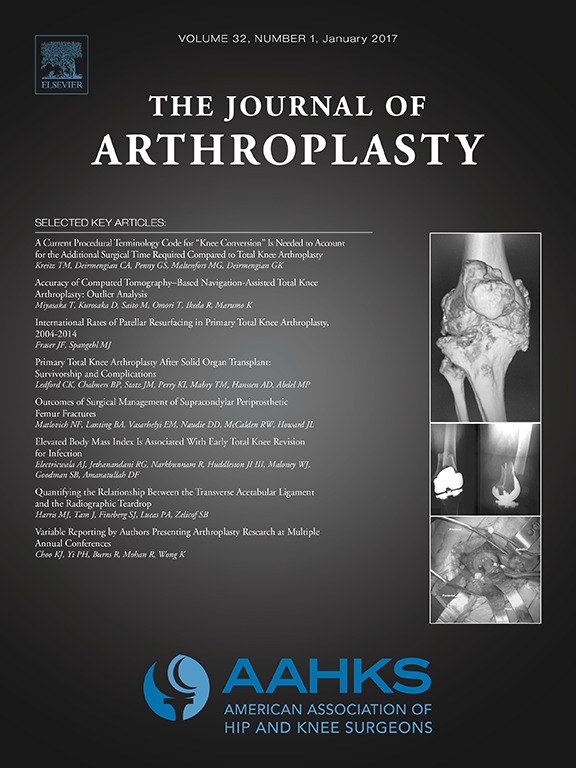PeerView
You are viewing the most viewed ACE Reports by Orthopaedic Resident/Interns over the last 30 days in all specialties.
Displaying
100%
①
Synopsis:
One hundred patients with ankle osteoarthritis were randomly assigned to receive either intra-articular platelet-rich plasma injections (PRP; n=48) or intra-articular placebo injections (n=52).The primary outcome was the patient-reported American Orthopaedic Foot & Ankle Society (AOFAS) score over 52 weeks.Secondary outcomes included various patient-reported measures assessing pain, function, quality of life, and indirect costs over the same period.The adjusted between-group difference for the patient-reported AOFAS score at 52 weeks favored the placebo group by 2 points (95% CI, 25 to 2; P = .31).With regards to secondary outcomes, there were no statistically significant between-group differences observed as was measured at 52 weeks post procedure. Overall, this indicates...
Read More »
Level 1 RCT
①
Synopsis:
141 patients undergoing total knee arthroplasty were randomized to receive either a cementless implant (n=76) or a cemented implant (n=65).Outcomes of interest included Oxford Knee Score (OKS), Knee Society Function Score, Forgotten Joint Score (FJS), percentage of normal knee, patient satisfaction, incidence of revision, and the incidence of reoperation.Outcomes were assessed at 2 and 6 years post-operation.There were no differences in all outcomes at 2 and 6 years except for patient satisfaction which was significantly better in the cementless group. The rate of...
Read More »
Level 1 RCT
①
Synopsis:
Two hundred twenty-four patients with knee osteoarthritis were randomized to receive different tibial baseplate fixation methods during total knee arthroplasty (TKA).The patients were assigned to three groups: Group 1 received a cemented tibial component (n=97), Group 2 received a pegged porous cementless tibial component (n=87), and Group 3 received a cementless tantalum monoblock porous tibial component (n=90).The primary outcome of interest was survivorship, and secondary outcomes included functional measures such as the Oxford Knee Score, Knee Society Score, and radiological data.Outcomes were assessed up to 10 years post-operatively.The results indicated that, irrespective of tibial fixation method, the overall survivorship was excellent at 99.6%.One knee in Group 2 with cementless fixation and screws required revision for aseptic loosening at 3 years, resulting in a cumulative survivorship of 88% at the end of 10 years.Functional outcomes showed no statistically significant differences between groups. Additionally, radiological outcomes,...
Read More »
Level 1 RCT
①
Synopsis:
Eight studies, including 615 patients who underwent total hip arthroplasty (THA), were analyzed in this systematic review and meta-analysis comparing the Direct Anterior Approach (DAA; n=303) to the Postero-Lateral Approach (PLA; n=312).Pooled outcomes of interest included surgical site infection rate, duration of the operation, length of incision, and pain scores using the visual analog scale (VAS) after surgery.The meta-analysis revealed no statistically significant difference in wound infections between DAA and PLA.However, DAA was associated with a shorter incision length, longer operative times, and lower postoperative pain VAS scores within 6 weeks. Additional research is...
Read More »
Level 1 Meta Analysis
①
Synopsis:
Forty-seven patients with single-level cervical radiculopathy were randomized to receive either BRYAN CDA (cervical disk arthroplasty; n=22) or ACDF (anterior cervical discectomy and fusion; n=25) in a prospective, randomized, controlled trial conducted as a Food and Drug Administration Investigational Device Exemption trial.The primary outcomes of interest included visual analog scales (VAS) for neck and arm pain, neck disability index (NDI), and reoperation rates.The follow-up rate was 91.3%.Both groups demonstrated significantly improved NDI, VAS arm pain, and VAS neck pain scores at 20 years compared to preoperative scores.However, there were no significant differences between CDA and ACDF groups at 20 years for NDI, VAS arm pain, and VAS neck pain scores.Reoperations were reported in 41.7% of ACDF patients and 10.0% of CDA patients. Both CDA and...
Read More »
Level 1 RCT
②
Synopsis:
52 patients were randomized to receive one of two treatments for acute scaphoid fracture.One group underwent a surgical (internal fixation) procedure while the second group underwent a closed (cast treatment) procedure.The primary outcomes examined were total (indirect and direct) costs of either treatment as well as length of work absences.Results demonstrated that there was a higher total cost incurred from surgical treatment in both manual and non-manual workers. However, closed treatment...
Read More »
Level 2 RCT
Synopsis:
38 adolescents with 50 knees affected by Osgood-Schlatter disease were randomized to three monthly treatments of either prolotherapy with a dextrose solution, or so sham prolotherapy with saline.Patients were assessed for function on the Victorian Institute of Sport Assessment (VISA) score after 1, 2 and 3 months. Results demonstrated no...
Read More »
Conference Report
①
Synopsis:
Three hundred and three patients with ankle osteoarthritis were randomized to receive either total ankle replacement (n=152) or ankle arthrodesis (n=151).The primary outcome of this trial was the change in the Manchester-Oxford Foot Questionnaire walking/standing (MOXFQ-W/S) from baseline to one year.Other outcomes of interest were MOXFQ-W/S, -pain and social interaction at 26 and 52 weeks, Foot and Ankle Ability Measure - activities of daily living (FAAM-ADL), and sport subscale scores at 26 and 52 weeks.Quality of life was also assessed using the EuroQoL 5-Dimension 5-Level questionnaire at 12, 26, and 52 weeks. Both groups saw...
Read More »
Level 1 RCT
①
Synopsis:
Three randomized controlled trials, involving a total of 343 patients with anterior cruciate ligament (ACL) injury, were included in this systematic review and meta-analysis comparing ACL surgery (Treatment A) vs.non-surgical treatment (Treatment B).Of the total participants, 180 underwent ACL reconstruction surgery, while 163 received non-surgical treatment.The primary outcome of interest was the development of knee osteoarthritis, which was assessed using the Kellgren-Lawrence scoring system, with a follow-up duration ranging from 2 to 11.1 years. The meta-analysis revealed...
Read More »
Level 1 Meta Analysis
①
Synopsis:
132 patients between the ages of 50 and 80 years undergoing primary, unilateral total knee arthroplasty (TKA) were included in this single-center, 3-arm, triple blinded trial.Patients were randomized to receive either an interspace between the popliteal artery and capsule of the posterior knee block (iPACK; n=44), genicular nerve block (GNB; n=44) or a combination of the two (iPACK+GNB; n=44) alongside combined spinal anesthesia and continuous adductor canal block.The primary outcome of interest was 8-hour postoperative knee pain during movement, measured using a visual analog scale (VAS).The secondary outcomes of interest included VAS knee pain and posterior knee pain during rest and movement in the post anesthesia care unit (PACU) and at 4, 8, 12, 24, 36, and 48 hours, morphine consumption at 12, 24 and 48 hours, sensorimotor function of the tibial and common peroneal nerve (CPN), timed up and go (TUG) scores, range of motion (ROM), and quadriceps strength (QMS).Additional outcomes included the length of hospital stay, quality of sleep, and patient satisfaction.According to study findings, a significant difference for VAS knee pain during movement, VAS knee pain at rest, and VAS posterior knee pain at rest and during movement was found for all groups at 4, 8, and 12 hours, as well as for VAS knee pain during movement at 24 hours, and VAS knee pain at rest and on movement and VAS posterior knee pain on movement at 48 hours.However, this difference was only clinically significant for the iPACK+GNB group VAS knee pain during movement scores at 4- and 8-hours when compared with the iPACK group. No clinically significant...
Read More »
Author verified Level 1 RCT




 LOGIN
LOGIN




